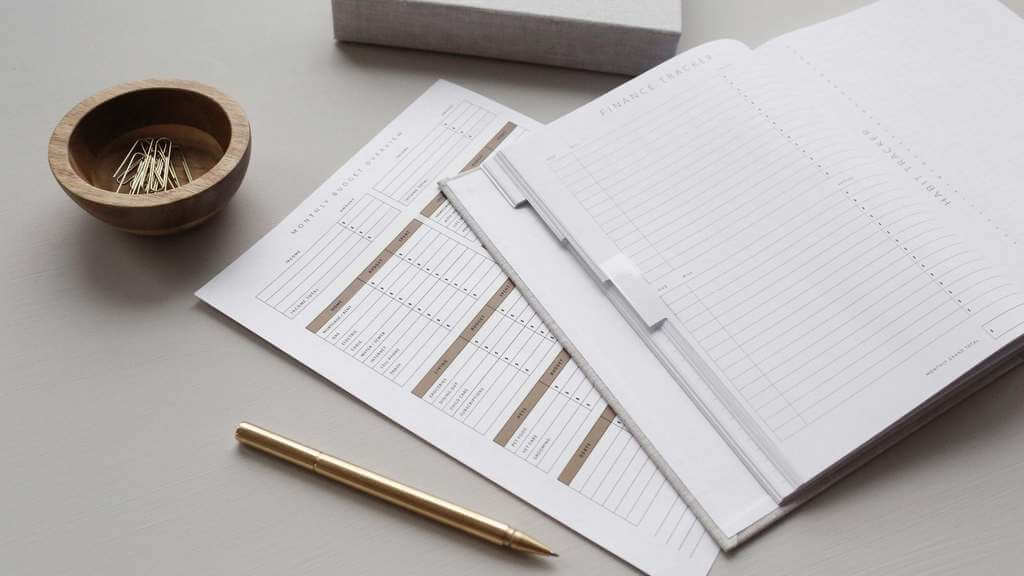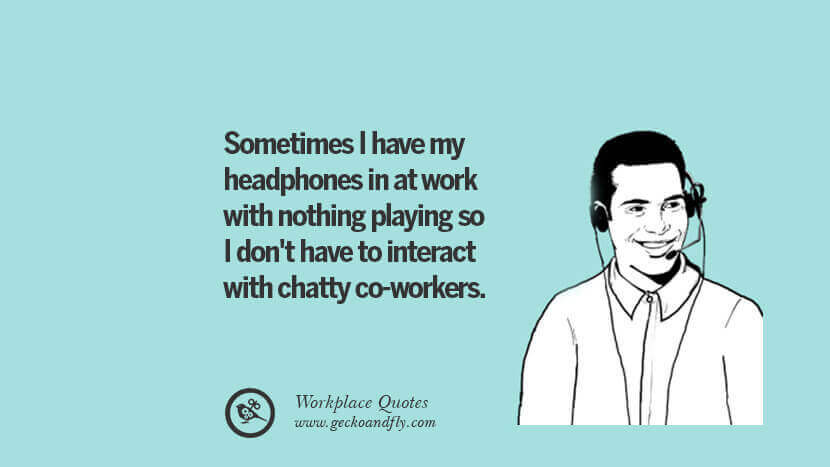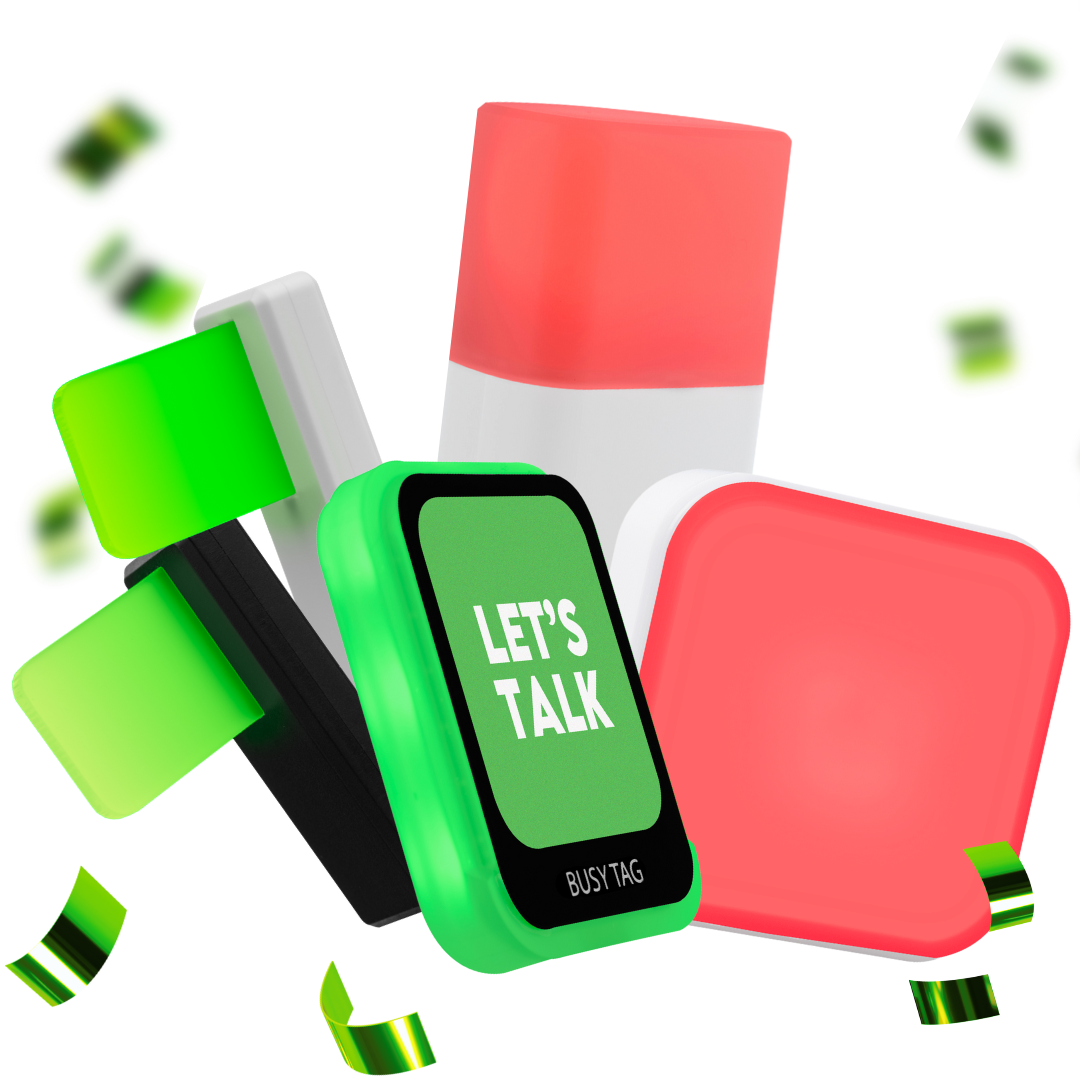The Ultimate Productivity Formula for Making More Money: The Secret Revealed
- Updated on: January 6, 2025

“Success is not an option, but a habit.” is something you’ve probably heard already, among thousands of others #productivity, #success, and #hustle culture motivational quotes. While all these quotes state the obvious and make it seem so simple, achieving your professional and financial goals is possible only if productivity is something you live by. And we all know that productivity is a fairly complicated matter per se.
Usually what people understand with productivity is hard work and hustle. To a lot of people, productivity is defined as persistent effort, vigorous work, and even borderline burnout. It’s doing crossfit before daybreak, it’s reading “Getting Things Done” (a great book, by the way) on lunch breaks, it’s going full keto for life, or turning the office thermostat to 60° F (16° C) because Mark Zuckerberg does that.
No. Here at Luxafor, we know that you don’t have to “go hard or go home” and be sleep-deprived to succeed. Productivity is optimization. And even though there is no magic solution that applies to everyone, there are some pretty universal general rules to achieve real and healthy productivity.
That’s why we created this super helpful guide that gives you the big picture of what is the ultimate formula for productivity and some really useful methods and tools to make it work. If you adopt a few of these tips and tricks, your efficiency at the workplace is likely to improve.
The ultimate productivity formula for success

Source: Unsplash
In order to really succeed in your professional life and be able to afford that lifestyle you deserve, the path to ultimate productivity is easy to thread if you bear in mind this formula:
Physical health + workload optimization + productive environment + the right tools = ultimate productivity
To get there, you really have to take care of all these building blocks from the ground up. And although all of these parts are equally important for success, the first and foremost is your physical (and mental) well-being. You can invest in hundreds of state-of-the-art tools, but you wouldn’t get much done with them if you’re in poor health. On the other hand, you can feel your absolute best, but if you still struggle saying “no” to tasks and constantly end up working late, you wouldn’t get there as quickly either.
Let’s go through all these components that lead you to your most productive self and look at what can be actually done to get there.
Game-plan to make your lifestyle more productive

Source: Unsplash
1. Take care of your physical well-being
“I’ve got a dream worth more than my sleep.” is one of the worst “motivational” quotes out there, and suggests a pretty distorted outlook on what is a productive and successful lifestyle. If you really want to make it big, the absolute essential is to start taking care of your health and physical well-being. Would it be worth it to be finally receiving that promotion / buying that Tesla / accepting that huge paycheck only to arrive there a worn out, feeble, miserable mess? Is putting your health and future at risk really worth the price?
Get a good night’s sleep

Source: Unsplash
First of all, sleep well. The typical 8 hours of sleep is of course the optimal average, however some people need more than that, while some can do with just 6-7 hours and an afternoon nap to feel refreshed. In fact, there are 4 chronotypes that describe different patterns of energy throughout the day, so it could be wise to understand which one you identify with most. You also need to tune in to what your body is telling you, so arrange your workday accordingly and plan plenty of rest to fully rewind.
Eat healthy, nutritious meals

Source: Unsplash
Secondly, eat well. This goes without saying, although it sure is harder to do. Fast food for lunch and sugary snacks will soon get back at you. Also, loads of coffee on top of each other can only take you so far. Some foods make you more sleepy after lunch break and some make your energy levels crash way faster than others. Choosing the best possible food choices for the sake of productivity might sound tricky at first, however, it simply means having a balanced and nutritious diet.
One solution is to start meal prepping which will help you control your portions and calorie intake. And it’s not that time consuming really, if you prepare a batch for the week ahead! Another solution is a careful consideration of where to eat and what to pick, meaning you’ll have to decide what you’re going to eat beforehand, and stick to it (not wait until you’re starving and willing to eat practically anything). Additionally, load up on some healthy snacks to deal with drops in energy like a champ.
Besides, don’t forget to drink more water. When you’re dehydrated, you’ll have far less energy, so find a great solution that helps you ensure an optimal daily intake of water. Here’s our 7 pro tips on staying hydrated at work.
Be active

Source: Unsplash
The third rule of thumb, of course, is physical activity. But how much activity is considered enough? It is recommended that adults should do at least 2 hours and 30 minutes each week of aerobic physical activity at a moderate level or 1 hour and 15 minutes per week of vigorous activity. Being active for 5 or more hours each week can provide even more health benefits. One fun and effective way to stay active at home is by using a trampoline for adults, which offers low-impact exercise and supports overall fitness.
If you have a fitness tracker, you’ll have an accurate data of how active you are. Most smartphones even are equipped with default step tracker, so definitely keep an eye on how many steps you take per day. A classic lifehack is to walk to work when possible. Perhaps parking your car three blocks away can do the trick?
Find what works for you

Source: Unsplash
Additionally, you can find your healthy lifestyle hack. Some people feel that they thrive when on a plant-based diet. Others enjoy the benefits of bulletproof coffee and intermittent fasting . There are plenty of “hacks” out there to try and see if it’s a good fit for you, but only if you take care of the three cornerstones – sleep, diet, and fitness – beforehand.
Also, an occasional checkup with your GP is very beneficial to see how you’re doing health-wise. Sometimes vitamin deficiency is what should be improved to feel in shape.
2. Optimize your workload
But how to survive the neverending pile of tasks, and the stress of never having enough time for everything? As Tim Ferriss said in his book 4-Hour Workweek – “Focus on being productive instead of busy.”
We have developed the misconception that being productive equals being constantly busy – replying to emails, attending meetings, and being always available for problem-solving. But exactly this busyness takes us further and further away from state of focus, flow state, or simply deep work, a term coined by Cal Newport in his bestseller Deep Work.
Prioritize your tasks smart

Source: Unsplash
A fairly simple advice, but still worth reminding. Here a helpful read is Brian Tracy’s Eat That Frog! which describes an approach to getting your biggest, most important task done first. Mark Twain once famously said that if the first thing you do in the morning is eat a live frog, you can go through the rest of the day knowing the worst is behind you. Your frog is your worst task, and you should do it first thing in the morning.
Another method for smart prioritizing is The Eisenhower Matrix, an easy, yet an extremely effective way to prioritize and manage tasks and your time. It is a system that basically makes you separate all your activities into four priority levels, one of which (Not Important/Not Urgent) is immediately dropped, so really it’s only three categories of attention-worthy tasks to focus on. You can read our full article on Eisenhower Matrix here.
Tools for it:
We love using Todoist and PomoDone apps for effective management of priorities. For larger teams, Basecamp will help assign tasks to every team member. All of these apps can be cross-integrated through Zapier, and even connected to Luxafor Bluetooth to show others you’re currently working on a high-importance task.
Alternatively, if you need to take healthy breaks off screen, a paper planner like Office Hero is a perfect solution. Office Hero lets you achieve a healthy work-life balance, measuring your daily, weekly, and monthly progress in an actionable way.
Set times for specific activities

Source: Unsplash
What if there was a specific time when you checked your email, instead of every 20 minutes? Sounds crazy? It’s not. Julie Lee, managing director of Maxus Chicago reveals: “Each day, I set a time to check my email and address as much as I can. But I always set an end time, and stick to it.” The same goes for messaging via Slack. Don’t fret about not responding right away, even if it feels like breaching workplace etiquette. As much as email & Slack have become staple tools for professional communication, they’re also among the most common workplace distractions.
Tools for it:
Set up your Luxafor Flag to flash a specific signal whenever it’s time to check your email (you can even connect it with Google Calendar event or any other task management service through Zapier). Select a specific pattern whenever a keyword, like “Urgent” or “ASAP” appears in your emails or Slack.
You can also use an award-winning time tracking & project management software actiTIME that will tell you exactly where your time goes for each project and task .
Work in sizable chunks

Source: Unsplash
One of the most popular ways to beat procrastination is to divide time spent on tasks into sizeable chunks and scheduled breaks. In other words, it’s the Pomodoro technique. This popular method for executing tasks can help you power through distractions, focus better, and simply get things done in short bursts, while also taking frequent breaks to rewind, overall improving productivity.
The classic method of 25 minute work + 5 minute break can be applied to replying emails, writing creative briefs, creating reports, or even brainstorming in meetings. Read our full guide on mastering the Pomodoro technique for different tasks.
Tools for it:
Use PomoDone to complete tasks on set intervals. If you don’t want to be annoyed by the ringing sound when the timer is up, connect it to Luxafor Flag to be notified by a custom LED flash.
Or if you like simplicity, configure scheduled times of working and breaks in the Luxafor Pomodoro Timer , and get notified on your Pomodoro intervals without the distraction of opening your browser.
3. Maintain a productive environment
Eliminate personal distractions

Source: Unsplash
A potential client messages you on Linkedin, and after a while you realize you’re 3 minutes deep into watching some kind of “award winning ad”. Social media, news and forums always find a way to sneak into our workflow, and we end up losing hours sucked into the supermassive black hole of the internet. As shown in one study, it takes about 25 minutes (!) to return to the original task after an interruption.
It’s normal to take a look at what your friends and peers have sent you on your break. What’s not is having a compulsive tendency to check what’s going on out of the fear of missing out. The only way to beat FOMO and maintain a steady focus on your tasks is to simply block the distracting sites out.
Tools for it:
The most easy to use website blocker is Block Site , a Chrome plugin which simply lets you list the sites you want blocked. The downside, though, is that the toggle button is very easy to get around, and if you’ll need to quickly check something on a blacklisted site, you’re likely to leave it off. StayFocusd , on the other hand, lets you enter a daily limit to visiting the site, and once it’s up, you can’t change a thing, making it an awesome option if you really want to get serious with your social media addiction.
Limit workplace distractions

Source: Geckoandfly
Sure, you’ve put your phone on Do Not Disturb mode, but can you do the same to your chatty teammates? The number one fallback of open offices is that it’s pretty hard to draw a line between “creative collaboration” and “hey, what’s up?”, “look, I was wondering…”, “you gotta see this!”.
No matter if it’s a light-hearted chat or simply annoying, these little social interruptions do great damage to your productivity. And they’re hard to control, too, which makes it even more frustrating. The dilemma of How can I be better at work? turns into How can I do my work without being a jerk?. It’s tough, but it shouldn’t be. You simply have to set boundaries and make your coworkers respect your time.
Tools for it:
Start using Luxafor Flag as your personal Do Not Disturb sign. Toggle between the easy-to-understand colors of red and green to show whether you’re busy or available for a chat, or communicate the meanings of custom colors. Alternatively, you can use Luxafor Bluetooth to convey your availability outside your office.
Take care of your office environment

Source: Unsplash
Did you know that levels of CO2 and the overall air quality are very important factors for your productivity? Moisture, noise, and lighting of the room are also equally important. While it seems like an impossible task, you actually can control these factors, even better so if you have a device that gives you that information.
To create an environment that actually promotes productivity and health, be sure to: 1. ventilate rooms regularly, 2. bring in some plants to purify air (here’s our top picks of 9 low-effort office plants) , 3. ensure suitable lighting in workstations, 4. have headphones in sight to deal with noise.
Tools for it:
Enhance your deep work state by using Active Noise Cancelling headphones to block out background chatter from your coworkers. Use Luxafor Meteo Pro to effectively measure changes in air quality and environmental conditions.
Game-plan to boost productivity in the office

Source: Unsplash
Now you know the steps you have to take for your personal growth. However, if you’re leading a team, then making your team succeed is just as important to you as your personal success. How to promote productivity in your office?
1. Motivate by example

Source: Unsplash
Well, you could arrange personal training for every one of your teammates so that they truly understand and integrate the will to live a healthy and organized life… But let’s face it – it is quite idealistic and would cost plenty of resources.
What you can do, quite realistically, is lead others by example, becoming inspirational and motivational because of what you do. That doesn’t mean you have to start bragging about how your daily routine looks a lot like Elon Musk’s. Seeking appraisal will only distance yourself further away from your peers, as they will find it hard to relate to a god-like productivity embodiment like you.
As your efforts in becoming a better, more productive self increase, the results will show in your character and the way you approach work. Be open about what you do to better yourself and sincerely share your newly discovered methods with your team. They may not follow you right away, but you will be heard.
2. Suggest methods for workload optimization

Source: Unsplash
Once you’ve tried a tool or a solution that helps you deal with your workload more effectively, share it with your team! Make a Slack channel dedicated to new methods for team improvement or dedicate a whiteboard to these ideas. Ask your coworkers what they have discovered and suggest what methods you have tested or what could be suitable for your peers. Remember that if you want to change your and your coworkers’ work life for the better, you’ll have to fill the knowledge gap and educate your teammates.
If you find that Pomodoro technique would be an awesome solution, find an article that informs on its use and benefits, and send it out via email or any other channel of choice. Here’s our full guide on all things Pomodoro that explains the benefits and implementation of the method.
If your team doesn’t use a team task management system yet, then check out whether ProofHub, Basecamp, Asana, Todoist, or other of these services is a good fit. If you already use a service of the sort, then think about how you can optimize the utilization of these channels.
A good idea is to equip your team with Luxafor Flags and connect with your favorite service through Zapier. That way everyone is notified when a specific keyword is mentioned in emails or Slack, whenever a Trello card is updated, or when somebody leaves comments on Basecamp project.
3. Promote a productive environment

Source: Unsplash
You’ll also have to educate your teammates about what you can do together to achieve a higher productivity in your office. Inform your coworkers about the changes you’re about to make and why. Once everyone knows why it’s important to ventilate the room and have healthy conditions in the office, it will be easier to have everyone participate.
In order to take care of interpersonal distractions, bring in Luxafor Flags and decide with your team how you’re going to use it. For example, print out a sheet that displays the meanings of different color signals, so that everyone is on the same page about the new rules of the office. Once everyone knows when to chat up their teammates and when to leave them alone, and when is the perfect moment for truly productive creative collaboration, your team is bound to reap the benefits!
Some final words
The bottom line to mastering workplace productivity is that there is no magic formula that can be applied to everyone. Unfortunately, it isn’t that everyone should simply start drinking kale smoothies and take cold showers everyday, and – boom – they’re basically superhumans.
The ultimate productivity key is something that each individual must seek for themselves. That’s why copying the routines of successful people doesn’t guarantee success. However, you can make some significant conclusions from looking at what successful people do to succeed, and it really does rely on the four cornerstones: the way you take care of your body, the way you approach your tasks, the environment you’re in, and what tools and solutions you use to carry out that vision.
Productivity, in the end, isn’t becoming a superhero, it’s just bettering yourself in many ways – it’s basically what Peter Drucker once said: “Efficiency is doing better what is already being done”.
Do you want to build and maintain new habits? Get your free PDF version of the Don't Break The Chain calendar and start today!
Do you want to build and maintain new habits? Get your free PDF version of the Don't Break The Chain calendar and start today!
Author

Kaspars S.
Productivity tool developer, corporate leader, and technical director at Luxafor.














